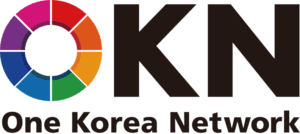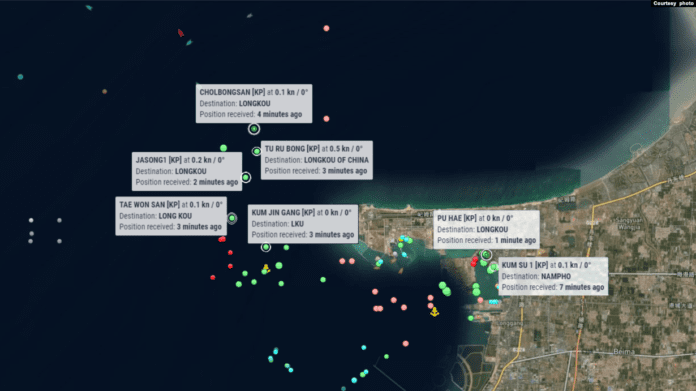The article was originally published by Voice of America and translated by OKN Correspondent.
As North Korea continues to violate sanctions by sea, seven North Korean ships have simultaneously appeared in a Chinese port handling minerals. In North Korea’s West Sea, another movement presumed to be a ship-to-ship transshipment has been confirmed. Ji-ha Ham reports.
On the 15th local time, seven North Korean ships appeared in Chinese waters.
According to ‘MarineTraffic,’ which shows real-time ship location data, ‘Cheolbong Coral,’ ‘Jaseong 1,’ ‘Geumsu 1,’ and ‘Buhaeho’ were reported at Longkou Port in China that day.
The Buhae and Geumsu 1 were already anchored at the inner pier of Longkou Port, and the other five ships—including the Cheorbong Coral—were at the moorings of the port.
It is not the first time a North Korean ship has been found in the Longkou Port area, but it is not common for seven ships to be at one port at once.
It is not common for North Korean ships to enter and depart from the Longkou port, located in China’s Shandong Province. It is a “mineral-handling” port where various mineral yards, including coal, are installed.
Longkou Port, located in Shandong Province, China, is a “mineral handling” port with various mineral yards, including coal, and it is not common for North Korean ships to enter and depart from ports.
However, North Korea’s coal transport here has been caught several times before.
In a report published in March, the UN Security Council Sanctions Committee on North Korea said that North Korea’s ‘Yonggwang Furniture and Building Materials Corporation’ was involved in exporting 100,000 to 200,000 tons of North Korean coal to the ‘HongKong Great Fortune Development Co.’ last year. It also presented a record that the North Korean ship ‘Ryonhwa 3,’ partially loaded, sailed near Longkou port in China.
In addition, the report mentioned that the draft—the height at which the hull was submerged in water—changed while the North Korean ship ‘Suryeongsan’ stayed in Longkou port for about two weeks in August last year.
In addition, last year, several North Korean ships handed over coal to Chinese ships through ship-to-ship transshipment in the waters near Ningbo and Zhoushan, China. The panel of experts pointed out that the ships returned to North Korea after loading goods in white sacks at Longkou port.
In other words, Longkou Port may be the location where North Korean ships directly transport coal or load new goods in exchange for coal delivered from other seas.
However, it is interesting to note the background since North Korean ships, and even cargo ships, appear at once in this port.
Previously, the UN Security Council banned all exports of North Korean coal through resolution 2371 in 2017.
As a result, movements seemed to be as imports and exports of North Korean coal have significantly decreased in North Korea and China; however, it has regained its early vigor since around 2019, leading to controversy over sanctions violations.
In the 2020 advisory alert on North Korea’s illegal shipping practices, the U.S. government revealed that North Korea illegally exported 3.7 million tons of coal in 2019 alone. In addition, the panel of experts pointed out that North Korea transported 552,400 tons of coal to China’s waters and ports on 64 occasions.
Currently, large ships regularly pass in and out of Songrim port—North Korea’s major coal port—and black objects appear to be coal are being caught around them.
In the midst of this, suspicious ship-to-ship transshipment was again reported in North Korea’s West Sea.
A satellite image by ‘Planet Labs’ shows two ships with a length of 75 m and 65 m having a rendezvous. The image was taken on the 12th, 2km northwest of Chodo and 36km from Nampo in the West Sea of North Korea.
Given that the middle parts of these ships are attached to each other, but the front and rear parts are slightly apart, a third vessel, such as a barge, may be at the center of the two.
In general, when two oil tankers exchanging oil try to transship, the hulls are completely attached, but when loading and unloading minerals such as coal, a barge with a crane function is positioned between the two ships.
In its annual report released in March this year, the UN Security Council’s panel of experts from the Sanctions Committee on North Korea stated that North Korea is using a new method of transshipment between ships in its territorial waters rather than in open waters.
In particular, it is important to note whether it was a different transshipment activity between ships this time—the panel report pointed out North Korea’s ‘West Chosun Bay,’ the West Sea area near Chodo, as the new transshipment site where suspicious transshipment between ships was reported.



